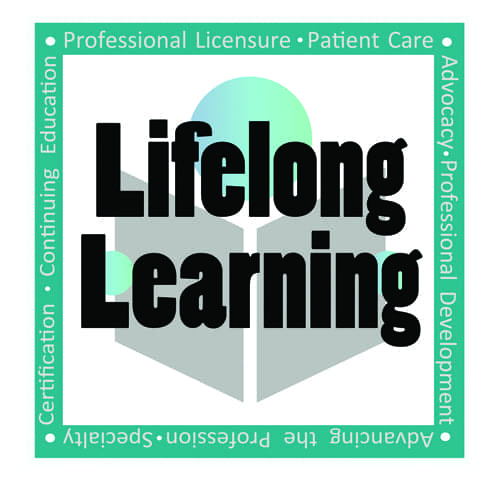Understanding the types of certificates and certifications available for physical therapists can foster continued learning and help professionals make informed choices about their educations
By Lori Hankins
It is important for physical therapists to understand the difference between earning a Certificate, a specialty Certification, and/or a Certificate of Attendance in Continuing Education. They are distinctly different from one another, and by defining each, it enables or empowers consumers to make choices that are better aligned with their own personal and professional development. A clearer understanding can lead to well-informed choices and a path of lifelong learning.
Defining a Certificate
According to the Oxford Dictionary, a Certificate is defined as “a document attesting a level of achievement in a course of study or training.”1 What does this mean? By earning or receiving a Certificate, it indicates that a particular skill or training has been obtained. In addition, the awarding of a Certificate implies that there is a mechanism in place to verify that the learning outcome has been achieved (ie, tested against predefined outcomes of the learning event).
Once this has been successfully measured, a Certificate is awarded to the participant. A therapist may be seeking a particular skill to add service and care to his or her patients, which requires one or more classes to obtain the expertise. Upon completion, the therapist earns the Certificate, and no further education or follow-up is required to maintain the skill.
Certification: The Definition and Process
Certification, on the other hand, is quite different. It can be characterized as the earning of a specialization in a field or profession. Individuals are measured by clearly defined and predetermined learning outcomes. These benchmarks demonstrate the standards through appropriate testing measures/methods; and upon successful completion, they earn the specialty distinction. The Certification is then identified with a credential after the student’s name and title. In addition, the person who has earned the credential must show periodic continued competence in the Certification subject area in order to maintain a level of proficiency. This is a very important part of the Certification process as this requirement indicates a continued level of commitment to all stakeholders—students, patients, and healthcare professionals.
It is helpful to define what continued competency might involve. It could mean, for example, if a Certification is earned in the area of manual therapy/orthopaedics, then a potential expectation of the program may be the attendance of a certain number of continuing education hours in a “hands-on” environment during a certain time frame to maintain the credential. Submission of documentation is required by the granting institution to verify and measure that the collected information is being met—hence, substantiating the continued competency of the individual. In a nutshell, one must learn the content, earn the Certification, and continue to maintain the level of expertise through periodic education requirements. This is a very important element of Certification and a clear distinction from a Certificate program.
The granting institution also has responsibilities in the Certification process, including the administration of the testing elements and the documented periodic review of the program; including, but not limited to, participant and instructor feedback. Assessment activities are important to assure that the program and learning outcomes are being met and reviewed regularly for improvement. A record-keeping system should be in place for monitoring the required documentation of the individual, which is needed for the continuation of the credential. Testing consistency is also important, and only with regular review and test result analysis and processes can this be achieved. With methods such as these in place, it assures the participant that the credential he or she is considering is of the highest standard. It will be an investment of time, money, and energy to undertake a Certification, and this should be important to the participant when choosing a program.
Exploring Accrediting Agencies
Take time to review the accrediting agencies of the education institution to be sure quality assurances are in place. This information is oftentimes disclosed on program brochures, literature, and websites under “Consumer Disclosures.” This disclosure/accreditation review will be well worth the time to review. If unsure about a particular accreditor, seek out more information. Links to websites as well as address and telephone information is commonly required when an accrediting body is referenced by an educational institution. Due diligence in this area will be important prior to entering a Certification program.
If Certification is the path a physical therapist chooses, there are options. Specializations/Certifications are available in the areas of geriatrics, pediatrics, manual therapy, sports, primary care, craniofacial, and many others. You certainly know who your patient population is; and based on that information, you know what you do well. You could further solidify that by focusing on your current specialty.
However, if growth in another area of specialization intrigues you, explore the options. You could maintain your current patient population. While expanding into another area, that could open up new growth opportunities for your practice or the facility in which you practice. This could be added value and could assist in marketing yourself and the clinic. It’s certainly food for thought in this ever-aging, ever-exercising, ever-enduring population called “patients.”
Certificate of Attendance in Education
Lastly, it is important to address the meaning of Certificate of Attendance. This certificate is awarded at the conclusion of a continuing education event. Delivery methods vary, including online channels and live, in-person events. It indicates that a learning event was attended and some form of outcome measurement was conducted. This is broad, and some providers of continuing education—based on accreditation and provider status—have further and more detailed guidelines pertaining to the issuing of CE hours. Therapists are urged to research this information with the provider as part of their due diligence in choosing a well-qualified provider for continuing education needs.
Finding Your Path to Learning
Assessing one’s own strengths and weaknesses will also aid in your decision to pursue a certification. This could be an opportunity to gain knowledge in an area of practice that has been identified as a weakness, either as an individual or throughout a facility as a whole. If a plan is well-constructed, it could be win-win-win for the therapist, the therapist’s facility, and the therapist’s patients.
Which is the best path to choose? There is value in all three opportunities: Certificate programs, Certification tracks, and Continuing Education. Think about the overall goal and the thought of lifelong learning. As a PT, you have earned your graduate degree in the profession so that you may be licensed and provide physical therapy care. This could be a bachelor’s degree, master’s degree, or doctoral degree. If seeking a postprofessional degree such as a DPT, one might think about the advantages of tying in a Certification with an advanced degree. Choosing an educational institution that offers a pathway to achieve both allows the distinction of a degree and a specialty Certification by the time all course requirements are completed.
Also consider the stakeholders. This includes those in the profession, the clinics, other healthcare professionals, and most importantly, the patient. After all, isn’t this why you chose to be part of the healthcare community? PTP
It is recommended that individuals perform due diligence by exploring the details of individual Certificate and Certification providers regarding their offerings and their practices. This article is a generalization regarding the definitions of Certificate and Certification, and by no means should it imply that all programs are the same.
Lori Hankins is director of continuing professional education and marketing at the University of St Augustine for Health Sciences in St Augustine, Fla. For more information, contact [email protected].





